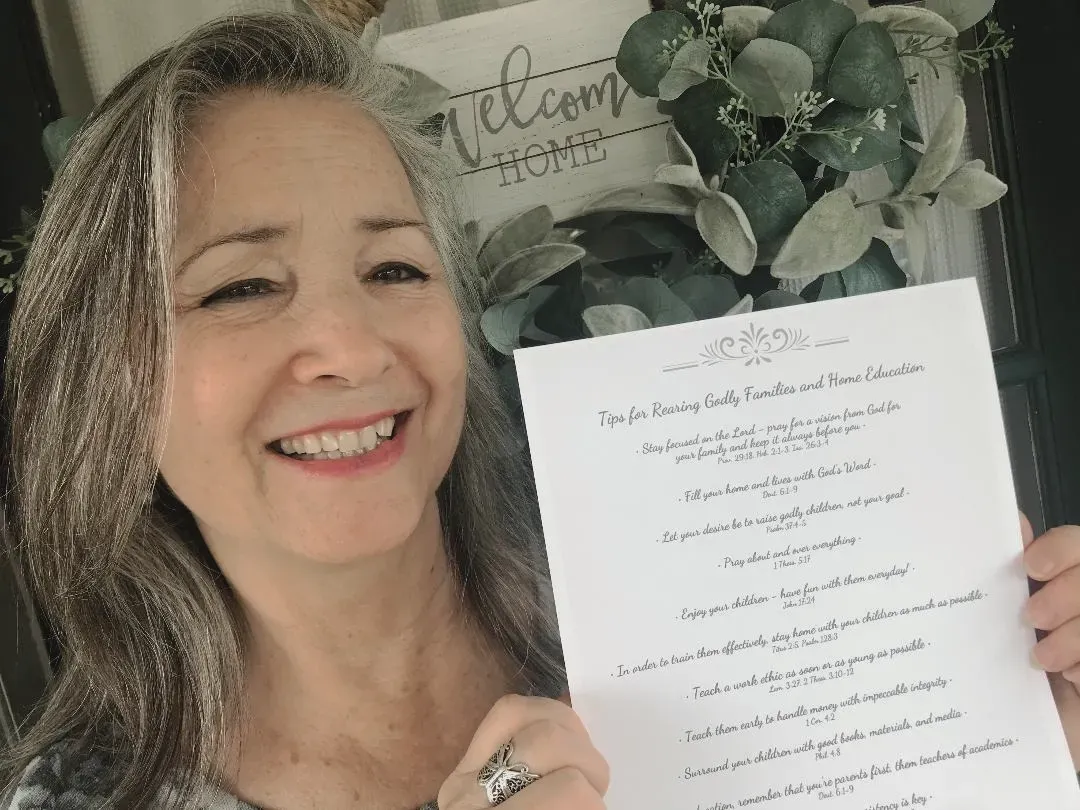ORGANIC GARDENING AND THE HIDDEN ENEMY
do you grow an ORGANIC GARDEN?
(And are you wondering what on earth that ugly thing is lying on the ground next to my foot?? I’ll explain shortly…)
But first let me ask--have you ever considered organic gardening? If you’ve never grown one, or have used only conventional rototillers and chemical fertilizers on your garden, I encourage you to do it organically! If you'll try it, I believe you will experience great satisfaction when you bite into your beautiful, bursting-with-flavor, highly nutritious produce grown entirely through your own hard work and sweat. And because you’ll know exactly where your food comes from, you can also have peace of mind knowing it’s safe to feed your children.
TRY IT, YOU’LL LIKE IT!
Growing an organic garden has indeed been very rewarding and one of the many ways God has shown me truth, and I absolutely love this about Him! He has taught me many and varied lessons, particularly in regard to raising a family. (See the blog post, “BE FRUITFUL”, for a more comprehensive discussion on this theme.) At this point in my life though, after previously growing larger gardens, I've decided to just grow tiny 'postage stamp' gardens in my old compost pile. And amazingly for its size, I have harvested quite an abundance of vegetables over the years. (One Spring, a butternut squash vine randomly sprouted from the previous year and, I kid you not, it yielded 36 squashes that fall!! I was elated--they're my absolute favorite.)
So now because there are just the two of us, I include no more than four tomato, pepper, cucumber, and squash plants in my little garden, but sometimes even these are too much. The best part of all, however, is that because this is where I compost all my kitchen scraps, the soil is essentially already prepared--it's moist, loose, and rich in nutrients. Hence, once I plant my garden, it should produce enough for us, with plenty to share with others!
THE HOW OF ORGANIC GARDENING
Clearly, as with any garden, an organic garden involves much more than just scattering seeds over the soil and waiting for rain to come and the sun to shine! In addition to information I gained from reading, my experience taught me to first turn up the soil with a simple garden spade. There is absolutely no need for the extra effort and expense of using a heavy rototiller. *
I then choose preferably organic and/or heirloom seeds and transplants, and follow with organic soil amendments like fish emulsion, wood ash, and especially more organic compost. Additionally, rather then planting a large garden in rows, another organic gardening practice to ensure a good harvest is to plant in small plots, placing your seeds and transplants close enough together so that they crowd out most weeds. A quick online search should provide good information on how close to place various plants. This technique also helps keep the soil moist, which lessens the need for frequent watering in dry weather.
It is especially helpful, too, if you plant raised-bed gardens in 4’ x 4' or 4' x 8' square frames, which I highly recommend trying. Also two more things to consider: vegetables grow better around certain others so it's good to do a little research and discover which neighbors your veggies like best to be around, lol...You might also take a little extra time to plant marigolds around the perimeter. Not only are they a pretty sight for your garden but they also repel many pests.
*If you want to ensure your garden is well aerated with plenty of room for roots to spread, there is an extra technique you can utilize for small garden spaces called double-digging: dig a row next to the edge 18" deep while setting that soil aside as you dig, chop the ditch into small clods; do the same as you dig a fresh row beside it, filling in the first row with the displaced dirt, and so on until you finish the plot. Break up and rake the top 4-6" layer into smaller, finer soil.
so WHAT IS this UGLY ENEMY?
Back to the photo—this horrific monstrosity of a weed is a root ball up I dug up that had been growing deep underground in my compost pile for several years. (I still have not identified it.) Many other times when I had weeded the area, I would see the leaves growing above ground and work on it, but I was never quite sure I got it all. So rather apathetically, I let it go. Ha! NOT a good idea. Eventually when I decided to turn my compost pile into a garden, I had to finally deal with it! One day, with determination at last, I plunged my trowel into the dirt, and every time I pushed I had to go deeper. Realizing this wasn't enough, I grabbed my shovel and tried to dig it out. I stood on that shovel and jumped on it several times, each time digging way down around the root ball, until at last that ugly thing was exposed and cut out—every last root and tendril. I couldn’t believe how large it had grown. Who knows how many beneficial nutrients this alien invader had ‘stolen’ from the rest of my vegetable plants all those years??
THERE’S A LESSON HERE!
Have you guessed where I’m going with this? Yes!! As I already mentioned, God has taught me many spiritual lessons through my gardening experiences. The obvious takeaway here—we must be diligent, perceptive, attentive, intentional, and extremely vigilant about how we guard our hearts, our lives, and especially how we bring up our children. (Again, I refer you to my blog post, “BE FRUITFUL”) However, instead of pointing out the many truths to you myself, I’m going to leave the rest up to you and God to learn what you want to know, and what He wants to teach you! Happy Gardening!! xoxo
“Keep your heart with all diligence; for out of it spring the issues of life.” Prov. 4:23 NKJV
Note: In my book, GROUNDED, Simple Tips for Living Well, 2nd Ed. I discuss Organic Gardening in greater detail on pp. 52-53

